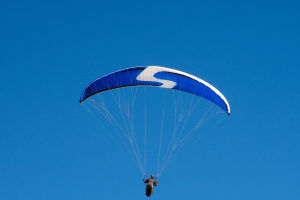Seaplanes, those fascinating flying machines that can both soar through the air and gently land on water, capture the imagination of anyone who’s seen one in action.
They combine the science of aviation with the art of marine navigation, making them unique in the world of transportation.
But how do they manage to fly and float with such ease? Let’s dive into the science behind how seaplanes work, and why they’re so special.
The Basics of Seaplane Design
Seaplanes are built to take off and land on water, and their design reflects this dual capability. The key feature that sets them apart from regular airplanes is their floats or pontoons. These structures act as the seaplane’s “landing gear” on water, allowing them to remain buoyant even while stationary. The floats are usually made of lightweight materials like aluminum, designed to displace enough water to keep the plane from sinking.
There are two main types of seaplanes: floatplanes and flying boats. Floatplanes have large pontoons attached to the fuselage, while flying boats have a hull-shaped body that functions as a boat when on water. Both types operate on the same principles of flight but differ in how they interact with water. The design is key to making sure the aircraft stays stable on both water and air, providing a smooth transition between floating and flying.
How Seaplanes Take Off from Water
Taking off from water presents unique challenges for seaplanes. First, the plane needs to build up enough speed to overcome both water drag and air resistance. As the seaplane begins to move, the water creates more resistance than it would on land, which makes acceleration slower. To counteract this, seaplanes are equipped with more powerful engines than similarly sized land planes.
Once the seaplane reaches a high enough speed, it begins to hydroplane—meaning the pontoons or hull start to skim the surface of the water, drastically reducing drag. At this point, the wings generate enough lift, allowing the plane to take off just like a regular aircraft. Hydroplaning is a crucial step because it minimizes the drag that would otherwise make takeoff difficult or even impossible.
Seaplanes, Explained: How Planes Work on Water
Stability in the Air
Once airborne, seaplanes function much like any other airplane. The aerodynamic lift generated by the wings keeps them in the sky, and the pilot uses the same controls as in any other aircraft. However, seaplanes do tend to fly lower and slower than most planes, especially when used for sightseeing or short trips over water. Their stability in the air is partly due to their lower center of gravity, thanks to the weight of the pontoons or hull.
Another unique aspect of seaplane flight is their ability to land on remote bodies of water, making them perfect for reaching isolated locations. Seaplanes are widely used in regions like Alaska, the Caribbean, and parts of Canada where traditional runways are scarce. This versatility makes them indispensable for search and rescue operations, delivering supplies to remote areas, and even luxury travel.
Landing on Water
Landing a seaplane on water is an entirely different challenge. The pilot must reduce the speed of the plane gradually, ensuring a smooth touchdown. The plane’s pontoons or hull must make contact with the water at the correct angle to avoid bouncing or nosediving. Much like landing on a runway, the approach needs to be precise.
Water landings are inherently more forgiving than land-based landings, as water provides a softer surface. However, waves, wind, and currents can create additional difficulties. Pilots of seaplanes are trained to assess water conditions before landing, as strong winds or large waves could make landing dangerous. Properly reading these environmental factors is essential for a safe water landing.
The Versatility of Seaplanes
Seaplanes offer an unparalleled level of versatility. They are not bound to airports and can access places that most other aircraft simply cannot. Their ability to operate on both air and water makes them ideal for niche roles like island hopping, bush flying, and even tourism.
In many parts of the world, seaplanes serve as essential transport links to remote communities, making them a lifeline for isolated areas. Their practicality and functionality ensure that seaplanes remain relevant even in the modern world of advanced aviation.
Seaplanes are marvels of engineering, combining the principles of both aviation and marine science. Their ability to transition seamlessly between flying and floating makes them a unique and vital part of air travel, especially in remote or water-based regions. With their specialized design, powerful engines, and versatile capabilities, seaplanes continue to serve roles that no other aircraft can.


